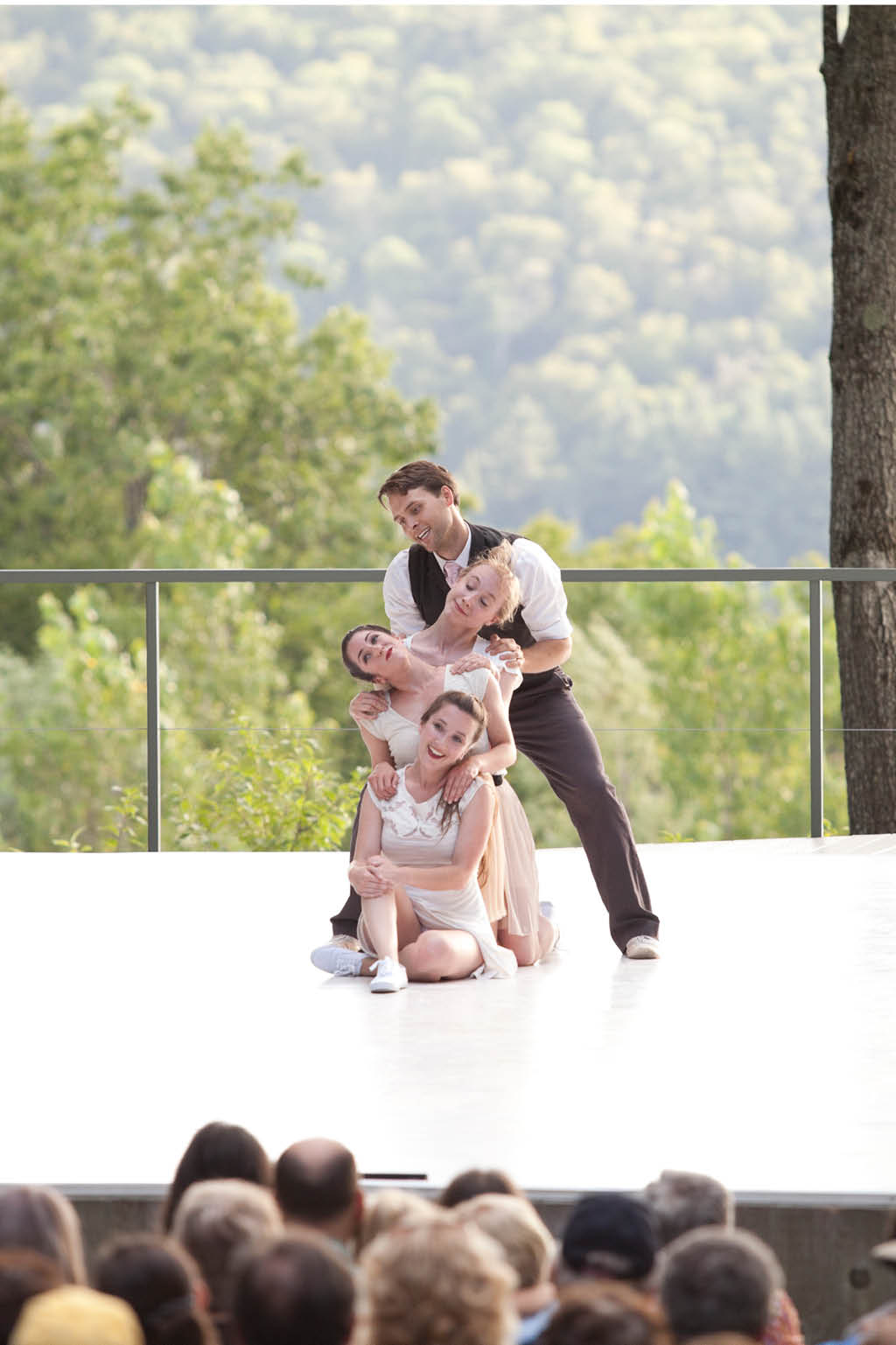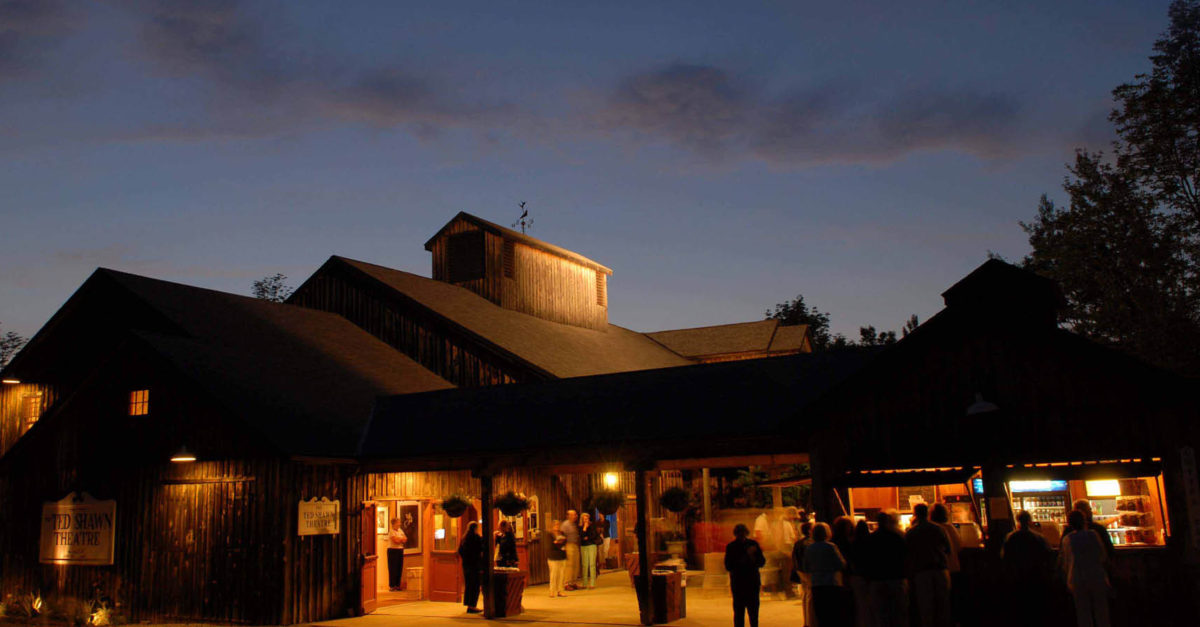Jacob’s Pillow: The Performers’ Perspective
Choreographers and dancers Jaime Shannon and Kevin Clark wax poetic on their experiences of performing at Jacob’s Pillow, a world-renowned dance center that hosts a summer festival in Becket, Massachussetts in the Berkshires.
How would you describe your hometowns? And what motivated you to move to New York City, where you both currently reside?
Jaime: My hometown is Milford, Connecticut. I spent most of my childhood there. I didn’t leave until I went to college. When I think about the town I grew up in, I remember a lovely little Connecticut town. Very nice energy, nice people, and a nice environment. I always knew I wanted to come to New York. The arts world is great. Dance was the main incentive, but my personality in general likes to be places like the city, where there is always activity.
Kevin: I’m from Albuquerque, New Mexico, and I love it there—the spaciousness and nature. Albuquerque is all about the desert and the mountains, both of which are so engrained in Mexican and Native American culture. There’s this really lovely sense of time, or rather no sense of it. The philosophy is to do it tomorrow—take it easy and relax. This is really great, except it doesn’t push people toward ambition. Toward the end of my time there, I felt like I wasn’t getting much done. New York City is a great place to grow and challenge myself. It’s a city filled with people who want to push themselves and grow and find new ways of connecting.
What are your earliest dance memories?
J: My family was vacationing in the Bahamas together, and one night my parents decided we were all going to go listen to the hotel band and we were going to dance. It didn’t sound fun to my four-year-old brain, and I was being really stubborn and bratty. They took me onto the dance floor, and I started moving; it was like a switch had been flipped. It felt amazing. It felt like joy. It felt like home. I refused to get off the dance floor all night. I knew in that moment nothing made more sense to me than spending the rest of my life trying to feel that good. My parents signed me up for dance classes that fall.
K: There’s a yearly festival in my hometown called the Albuquerque International Balloon Fiesta. It’s a huge event with over five hundred hot air balloons. I was there with my family when I was about six, and there was a stage and a band. They were playing Michael Jackson, and I started dancing. My parents took a video, and it’s very embarrassing. That’s my first dance memory. I should have known then, but I didn’t.
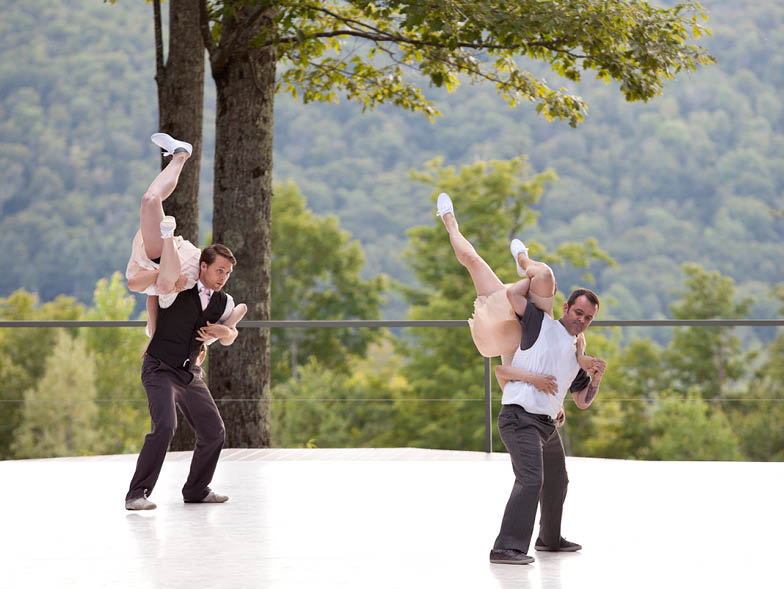
How did your dance training evolve after that first memory?
J: My dance studio, the Lee Lund Studio of Dance, became a second home from the ages of five to eighteen. The emphasis was on modern dance and theater jazz. After I graduated high school, I was a dance major at Hofstra University, where I studied a lot of modern dance and ballet. I then moved to the city to further pursue concert dance styles, like modern and contemporary, and began working with a lot of different choreographers and small companies. Six years ago, one of my best friends from college got involved in swing dancing. She was classically trained like me, and she stumbled on a flyer for swing dancer auditions. She made the team having no knowledge of swing dancing, but she was a great dancer and they trained her. One day, she called me up and told me she had to go back to Florida to work at Disney for a while, and she asked if I would consider meeting her dance partner, who now needed someone to work with. “You’re light and bouncy. You’ll be good at this,” she said to me. I went to a shag dancing class at Dance Manhattan and met Tony Fraser. After the class, we talked for hours, and he asked if I wanted to be his new dance partner. I couldn’t pass up the opportunity to train with this wonderful teacher and competitor.
K: I was dating a girl named Cathy at the time who was in show choir, and they were doing a swing piece. She asked if I would help her work on some of the moves they were learning. I eventually caved and began learning to swing dance. And then I really fell in love with the dance—I traveled and competed a lot.
How did you discover modern dance?
K: I was invited to attend a modern dance rehearsal at the University of New Mexico, and I watched a piece that was choreographed by a student who has since become a mentor to me. The modernist piece was raw and physical and visceral and so exciting. I signed up for the class and was hooked. I got my degree in dance from the University of New Mexico, with a minor in chemistry. I did some work around New Mexico and established a teaching company called The Rhythm Project, which was very successful considering it’s in Albuquerque. I then realized it was time to head to New York City.
How did you and Jaime meet?
K: Jaime and I met at a party. The hostess put on some music and encouraged me to swing dance with Jaime, who I had never met. When we realized we both knew swing dance and modern dance, we knew we were destined to work together.
How did the first opportunity (in 2014) with Jacob’s Pillow come about? Did they approach you? Did you know about this festival for many years?
J: I’ve known about this festival for years. It’s world famous for modern and contemporary dance. My dance partner, Tony, sent somebody an e-mail along with videos of us performing and said, “Hey, we do this. What do you think? Can we be in your festival?” which is not the process you’re supposed to follow. But Tony doesn’t pay much attention to proper protocol. It was already late in the selection process, but they asked if they could do a phone interview with us. I told them about my ideas of fusing swing dancing into a structure that fits concert dance, and they agreed to give us a shot. They put us in the festival, and we were a big hit. They reached out to us the next year and asked if we were interested in applying again, and we were accepted for year two. I found out it’s quite rare to be invited back for the Inside/Out series because they like to refresh the series and show something new every year for their audience. So, in year three, I decided to go through the traditional application process, knowing it was unrealistic to be asked back a third time but wanting them to know I had an interest. We were ecstatic to be accepted in year three.
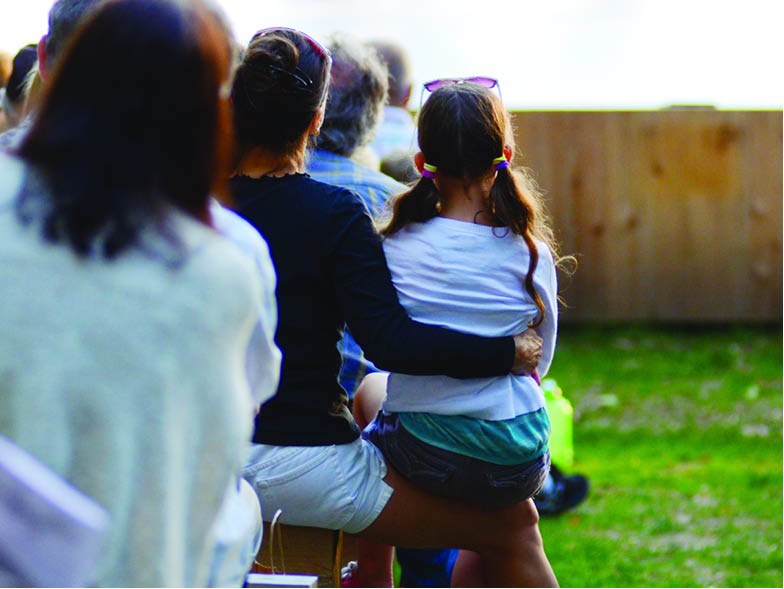
What is the Inside/Out series?
J: Jacob’s Pillow has several performance series. They have a few different venues— there are some theaters that host indoor performances and then there’s a big, beautiful outdoor stage, which is where the Inside/Out series happens. You see the trees, the mountains, and the landscape in the background. Every Wednesday through Saturday, the Inside/Out series presents half-hour pre-performances that are open to the public on the outdoor stage. It’s a one-time performance for us. We drive up to the Berkshire Hills, do our tech rehearsal and run-throughs, and then perform around six o’clock at night. We do a Q and A with the audience after the performance, and then we drive home.
Do students come to the festival to take classes?
J: They do have a school, and it’s a major part of the festival. Students from all over the world apply and audition to get into the school. There are different three-week sessions, like ballet, contemporary, and jazz. Students take class all day, probably six to eight hours a day, before the evening performances. The performances are not just for the students, though; they’re also open to the community and the general public.
What does it feel like to be a part of this festival, where there are so many kindred spirits all together?
J: It feels amazing just to step foot on that property. It’s a National Historic Landmark by law because that farm has been around forever. It was a stop on the Underground Railroad way before it was ever a training ground for dancing. Knowing the history of it and knowing what it created and how the entire modern and contemporary dance movement emerged from this festival—it’s very humbling to be on these grounds.
K: There’s an unspoken knowledge that you are with your family. It’s hard to overstate the emotional and historical significance of Jacob’s Pillow. Modern dance was popularized by Ted Shawn and his wife Ruth St. Denis when they formed the Denishawn Company and bought a retreat in the form of a farm called Jacob’s Pillow. After he and Ruth split personally and professionally, he began pursuing a new dream that began with a group of men he trained into a dance troupe. In their downtime, they built many of the structures that are still in use at Jacob’s Pillow. To raise money, they would host tea parties, with the dancers serving high tea outdoors to audience members, who would pay seventy-five cents for a cup. The audience would then be treated to a lecture-demonstration. It’s a testament to all the ways in which these artists had to struggle to make ends meet. There is so much energy and electricity in the air. You can feel the history.
Where is your jumping-off point for choreography?
J: For me, it always starts with the movement, not specifically with the dancers.I’ll have an idea in my head, whether it’s inspired by an emotion, an event, or a piece of music that I just heard. Then I figure out the movement quality and more specific choreography. I always have dancers in mind that I want to use. Once I have the cast set, I mold the movement even more to fit the skill sets of my dancers.
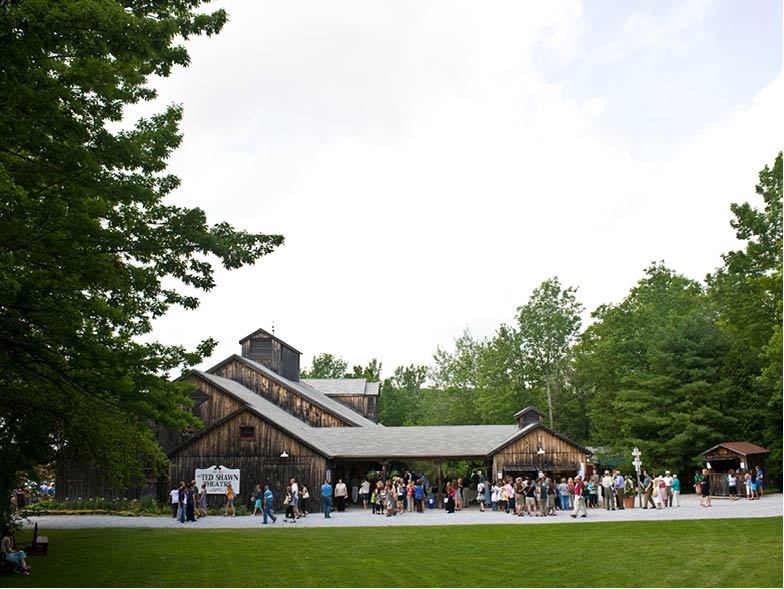
During the Q and A at Jacob’s Pillow, you spoke about the importance of weaving dance styles. Do you still choreograph only contemporary, or is your focus really now on fusing swing and contemporary?
J: I like choreographing both, but right now, most performance opportunities that have landed in my lap have been because people are requesting swing. So I’ve been focusing a lot on swing-based shows. Like you said, I like to weave the styles. I don’t want to show a traditional dance step from 1945 and have it look identical. I want to put some of the emotion and structure of concert dance into it. I’m always working to blend them and observe how they work together.
Do you think this niche you fill, of swing dancing infused with concert dance, is part of the reason you keep getting invited back to Jacob’s Pillow?
J: I think so. A lot of times, something like swing dancing is only seen as a novelty. It’s historical. You go out, you do a demonstration, you show people it looks cute, you make people happy, and then that’s it. To me, what I always loved about concert dance and contemporary dance was the artistry, the motion, and the depth that you can incorporate. When people kept asking me for swing, I wondered how I could take the structure, the emotion, the inspiration, and the depth that I have in modern and contemporary dance and put it into swing because, why not? It’s something that people aren’t doing, and it’s something that I think is important because the whole reason this music and this dance came about was purely human emotion. It was out of a time of depression and war and so much going on in the country. I want to bring some of that raw emotion back into it. I feel like it’s my job to take the stuff I learned in concert dance and the happy swing dancing stuff that people are asking me for and just mix it together and hope it makes sense.Kevin, what qualities does Jaime possess that make her such a special choreographer?
K: I think there are three things that I would pick. First, because the work she’s doing is kind of new, she doesn’t have the worry or fear that some of the other groups have of fitting in with current trends. Even if more people were doing this, one of Jaime’s strengths is her fearlessness to do honest work, even if it goes against acceptable trends of the moment. Second, she has a mind-set that everything is going to work out—so let’s just get to the art making. The third quality is her ability to approach choreography using a very descriptive language to help dancers comprehend and portray their roles.
Jaime, what made you choose Kevin, and why do you continue to enjoy working with him?
J: When I met him at that party, I knew he was going to be good. I could tell by his passion and his drive, and because he was so set on moving to New York that he was already making connections. I hadn’t even really seen him dance, but I told him that night I would be casting him. The fact that he was both a contemporary dancer and a swing dancer was solid gold. He’s a great performer and a very close friend, and I’ll always work with him if he’s always available to do my work.
K: Now I’m flattered.
When you are seventy years old and you look back on this experience, what will you remember about performing at Jacob’s Pillow?
J: I may not remember what dance I did or what song it was, but I’m always going to remember how I felt when I was there, standing on that stage and becoming part of the scenery, and giving something back to an environment that created so much for the dance world. That comfort, joy, and exhilaration of being a part of that legacy—it’s something that will never be erased from my memory.
K: I will remember standing on the stage and looking up at the sky in this institution for dance, knowing I was there performing among people who genuinely care about the art. There’s an overwhelming sense of rightness.
For more info, visit jacobspillow.org.
